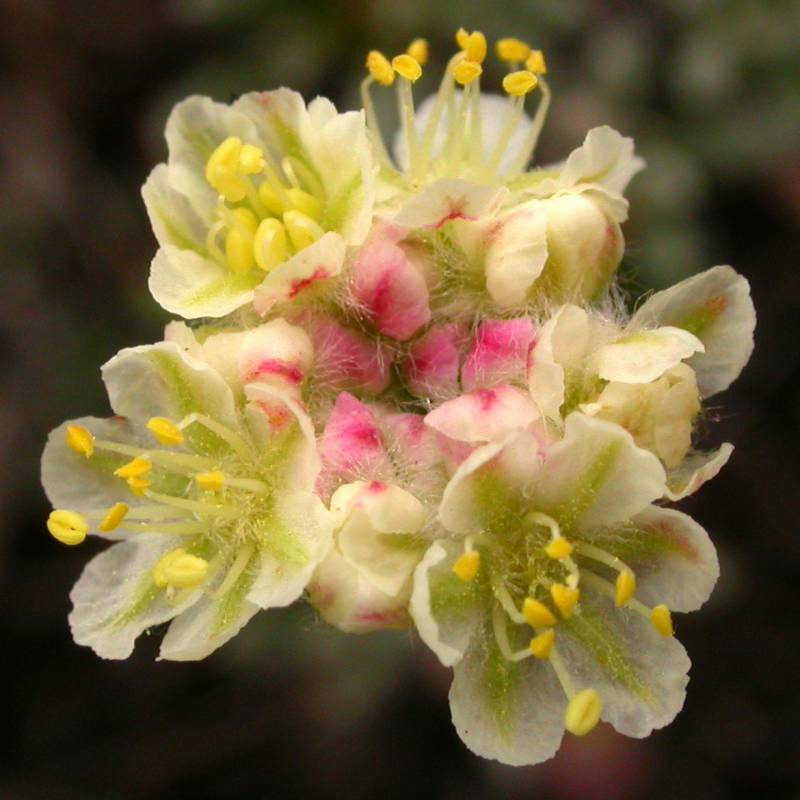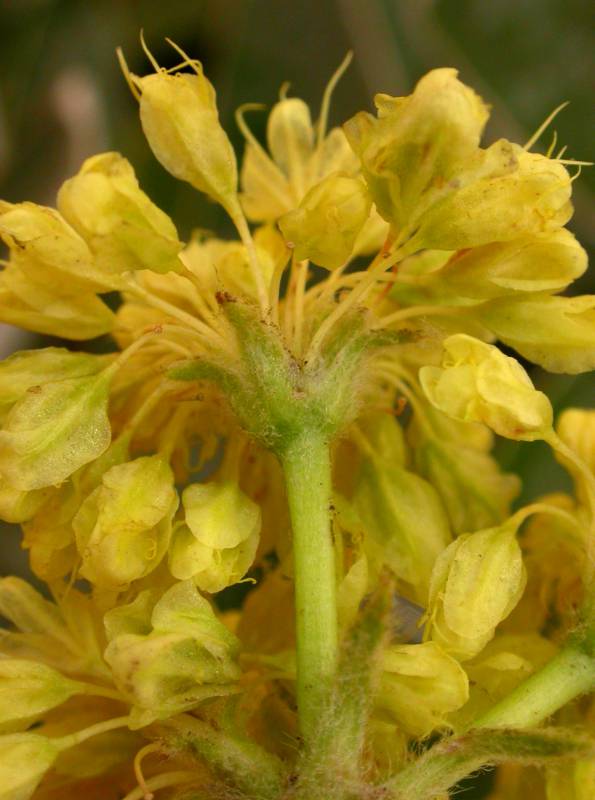|
thyme buckwheat, thyme-leaf wild buckwheat
|
arrow-leaf buckwheat, northern buckwheat
|
| Intricately branched, low and spreading to erect shrub 5-15 cm. tall, somewhat gray-woolly to silky throughout. |
Stout perennial from a woody taproot, the broad crown somewhat shrubby, the several stems and leaves forming a plant to 5 cm. high and broad. |
Leaves many, linear to linear-spatulate, 3-10 mm. long, usually revolute, somewhat wooly beneath and silky above. |
Basal, lanceolate to deltoid, more or less cordate-based, white-woolly beneath and green above, on petioles as long to several times as long as the blade. |
Flowering stems 3-8 cm. tall, always with a whorl of leaves about mid-length; involucres single and terminal, top-shaped, 3-5 mm. long, the teeth 6-8, erect, triangular, 1 mm. long; perianth with a stipitate base 0.5-1 mm. long, densely hairy, the 6 segments obovate, yellow or white to rose-red, 4-6 mm. long; plants dioecious, the staminate flowers with 9 stamens, the filaments hairs only at the base, the pistillate flowers with stout, spreading styles 0.5-1 mm. long. |
Flowering stems stout and naked, the inflorescence a compound umbel 2-20 cm. broad, with linear bracts at the base of both primary and secondary umbels; involucres 6-10 mm. long, lobed about half their length, the lobes usually reflexed: tepals either creamy-white or lemon-yellow, about 5 mm. long, with a stipe-like base about 1 mm. long. |
Achenes pubescent above |
|
|
|
|
|
| Separate from the similar Eriogonum douglasii by the involucre lobes; E. thymoides has erect lobes, E. douglasii, reflexed to spreading lobes. |
The usually large, heart-shaped leaves that are green on top and woolly white beneath will usually identify this species. |
| April-June |
May-July |
| Sagebrush deserts, dry ponderosa pine forest openings, and open ridges in lower mountains. |
Dry, open areas, rocky slopes and cliffs from low elevations nearly to the subalpine. |
Occurring east of the Cascades crest in central Washington; central Washington to Oregon, east to Idaho.
|
Occurring chiefly east of the Cascades crest in Washington; Washington to California, east to Idaho.
|
| Native |
Native |
| Not of concern |
Not of concern |
E. baileyi, E. cernuum, E. codium, E. compositum, E. douglasii, E. elatum, E. flavum, E. heracleoides, E. maculatum, E. marifolium, E. microtheca, E. niveum, E. nudum, E. ovalifolium, E. pyrolifolium, E. sphaerocephalum, E. strictum, E. umbellatum, E. vimineum |
E. baileyi, E. cernuum, E. codium, E. douglasii, E. elatum, E. flavum, E. heracleoides, E. maculatum, E. marifolium, E. microtheca, E. niveum, E. nudum, E. ovalifolium, E. pyrolifolium, E. sphaerocephalum, E. strictum, E. thymoides, E. umbellatum, E. vimineum |
|
|
| |



